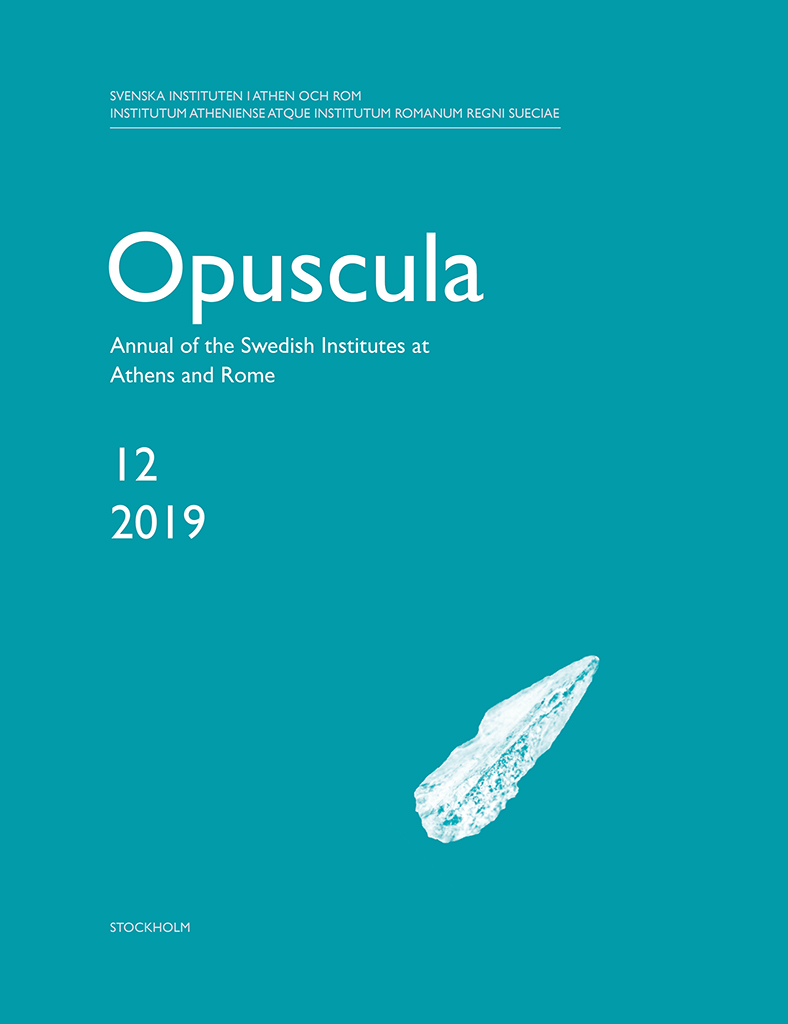All content of Opuscula 12 (2019) is available with open access. Printed edition distributed by Eddy.se AB. Also available at Amazon.com, Adlibris, and Bokus. View volume at ERIH PLUS. Snakes and other microfaunal remains from the Sanctuary of Poseidon at Kalaureia By Petros Lymberakis (Natural History Museum of Crete, Greece) & Giorgos Iliopoulos (University of Patras, Greece) Abstract The microfaunal remains recovered at the Sanctuary of Poseidon at Kalaureia (Poros island, Greece) are abundant and varied. They belong to a number of different animal taxa, including snakes, frogs, lizards, and some micromammals. They have been found in several locations but the largest concentration originates in a closed Late Hellenistic/Early Roman deposit within a cistern (Feature 03). The snakes in this assemblage are numerous, belonging to terrestrial and aquatic species, and to both venomous and non-venomous varieties. Bones of some of them along with certain frog bones show traces of burning, which may suggest some type of manipulation before the deposition. The microfaunal remains from the Sanctuary of Poseidon at Kalaureia also strongly suggest that these types of animal were involved in ritual activities—dead or alive. Bibliographical information Petros Lymberakis & Giorgos Iliopoulos, ’Snakes and other microfaunal remains from the Sanctuary…
All content of Opuscula 12 (2019) is available with open access. Printed edition distributed by Eddy.se AB. Also available at Amazon.com, Adlibris, and Bokus. View volume at ERIH PLUS. Animals in the sanctuary. Mammal and fish bones from Areas D and C at the Sanctuary of Poseidon at Kalaureia. With an appendix by Adam Boethius By Dimitra Mylona (INSTAP Study Center for East Crete, Greece) Abstract During the excavations at the Sanctuary of Poseidon at Kalaureia an extensive archaeo-environmental programme was implemented, resulting in the collection and analysis of a wide range of animal remains. This paper presents the mammal and fish remains in detail and offers interpretations which take into account the archaeology of the site, other types of finds, as well as the discourse on animals in cult. The material is examined in terms of chronological phases and of particular features within them in an attempt, common in all types of analysis within the Kalaureia Excavation Program, to link the material remains to human actions, placing emphasis on the materiality of cult. The degree of analysis and interpretation detail varies among different occupational phases of the sanctuary, because of the greatly uneven preservation and quantity of animal remains….

